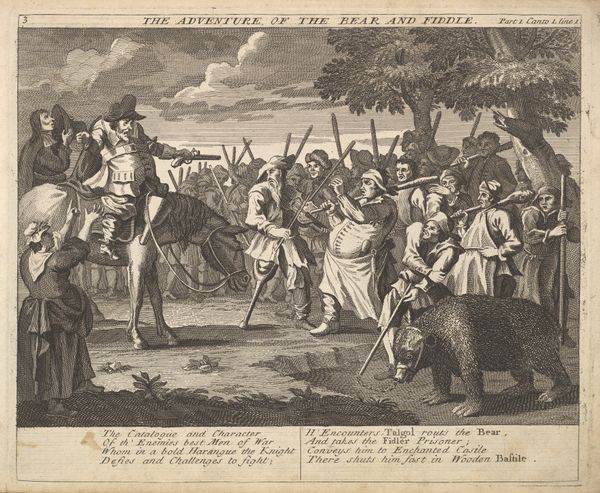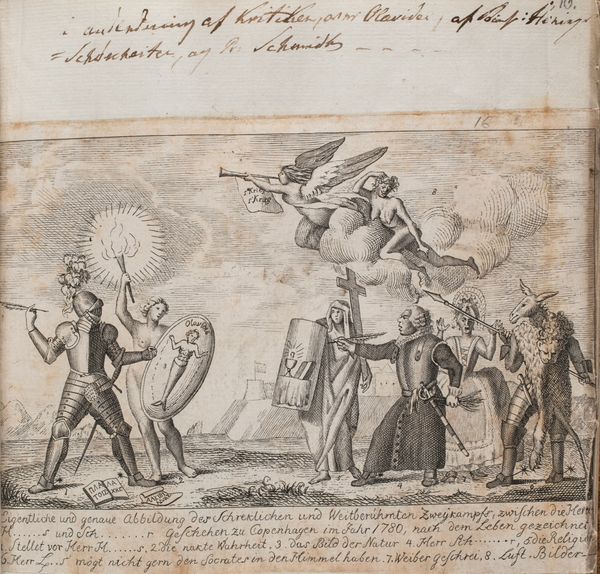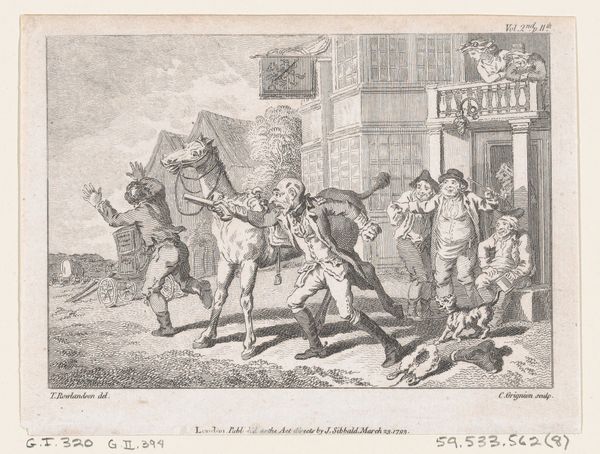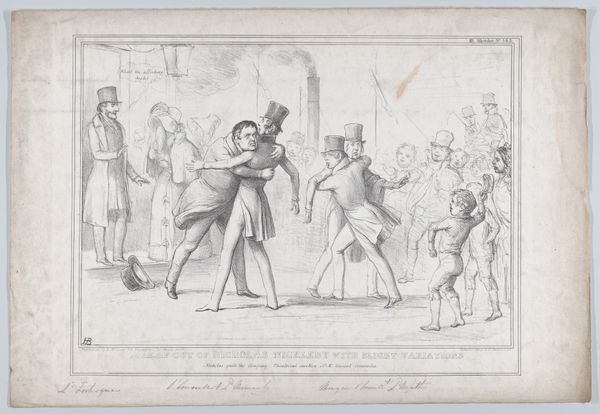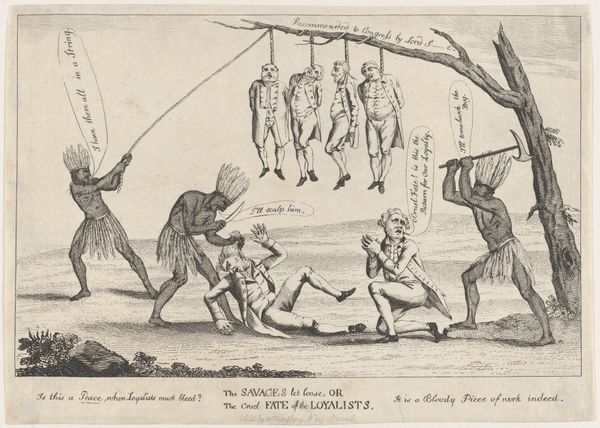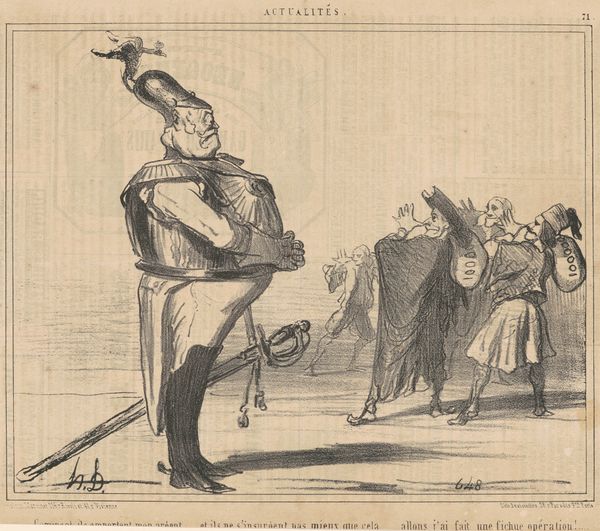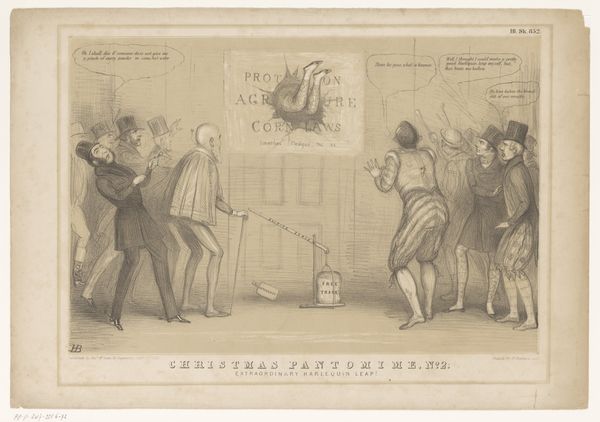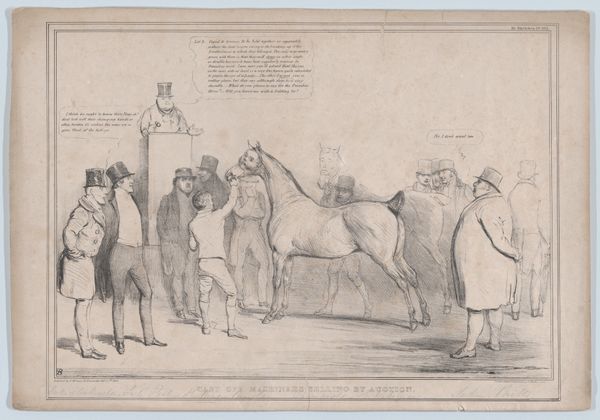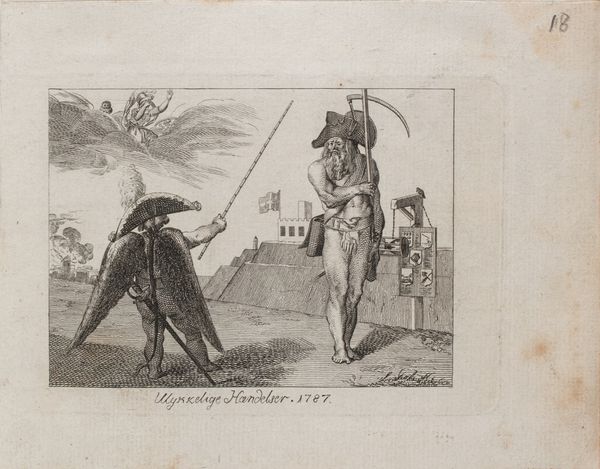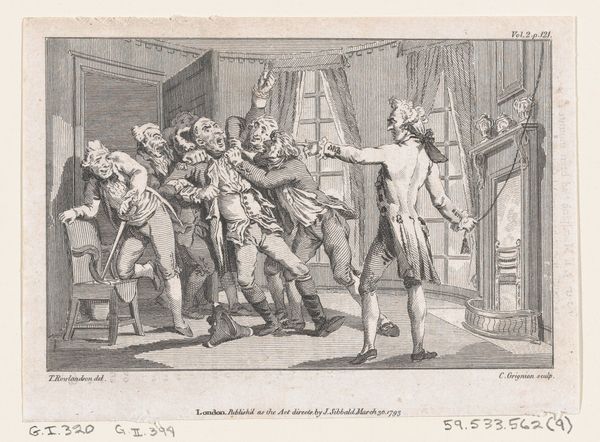
The Reconciliation Between Britannia and Her Daughter America 1782
0:00
0:00
drawing, print, engraving
#
drawing
#
narrative-art
# print
#
caricature
#
history-painting
#
engraving
Dimensions: plate: 9 5/8 x 13 7/8 in. (24.5 x 35.2 cm) sheet: 10 1/16 x 15 3/16 in. (25.5 x 38.5 cm)
Copyright: Public Domain
Curator: Let's consider this print now in front of us. Created around 1782 by Thomas Colley, it's titled "The Reconciliation between Britannia and her Daughter America." Editor: Well, immediately the conflicting visual elements overwhelm—a bizarre composition, really. The allegorical figures almost seem caught in a tug-of-war, their limbs akimbo and expressions…strained. Curator: Absolutely. Colley situates this work within the aftermath of the American Revolutionary War. Through caricature, the print is steeped in the political and social climate. Look closely, and we see a convergence of identity and fraught allegiances: Britannia embracing America, with others seemingly trying to pull them apart. It serves as visual commentary on nationhood, family, and reconciliation in a moment of deep ideological divide. Editor: Focusing on pure design, it’s chaos! Notice how Colley’s deployment of line dictates the mood of disarray, there is no organization to the elements in the composition—it feels incredibly imbalanced. The characters tug on the allegorical figures, each interaction points to another part of the picture plane. It makes your eye jump everywhere. The artist attempts to convey stability and reunion, and falls incredibly short. Curator: Indeed. But this speaks volumes about the societal pressures, right? The "Dutch" character lurking in the background, with his “Dutch Rumms” barrel, France and Spain vying for influence... they embody European meddling. Even the Native American figure representing America’s indigenous people hints at layers of complicated negotiations that preceded this so-called reconciliation. Colley’s art holds space for each nation, to each culture impacted by war and displacement. Editor: If you examine Britannia's shield, the inscription “George for Ever,” indicates the print is still largely sympathetic to the Crown despite its ostensible message of reunion, though America wields the pole marked 'liberty' – these elements indicate underlying sympathies within the structure of Colley’s composition. He might say he's pushing for "peace," but his rendering of forms betrays those colonial ties! Curator: An interesting, even provocative, reading that underscores how visual language reveals the intricacies of political sentiment. It urges us to confront the uncomfortable fact that "reconciliation" might well obscure continued oppression. Editor: Precisely. There’s real power in observing those subtleties and recognizing the aesthetic mechanics embedded in this so-called image of peace.
Comments
No comments
Be the first to comment and join the conversation on the ultimate creative platform.
